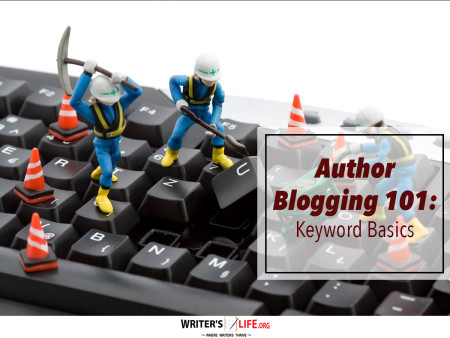- How To Tackle Jealousy In Creative Writing
- Common Submission Mistakes
- How To Stop Your Blog Becoming Boring
- The One Thing Every Successful Writer Has In Common
- How To Make Yourself Aware Of Publishing Scams
- Why Almost ALL Writers Make These Grammar Mistakes At Some Point
- 5 Tips For Authors On How To Deal With Rejection
- Top Mistakes to Avoid When Writing a Novel
- How to Avoid Common New Writer Mistakes
- 10 Mistakes New Fiction Writers Make
How to Write a Compelling Antihero That Works

A compelling antihero can transform a narrative by blending shades of gray into your storyline, heightening complexity, and engaging readers. In a world where characters are often neatly divided into heroes and villains, the antihero stands out, offering layers and depth that captivate audiences. But how do you write one that resonates? Let's explore some antihero character tips to get you started.
Antihero Character Tips for Successful Antihero Stories
Think of the antihero as the flawed protagonist we're all secretly rooting for. Unlike traditional heroes, antiheroes have their dark sides, and understanding these shades makes them riveting. The key to writing powerful antiheroes lies in creating characters that, despite their moral ambiguities, readers can't help but be drawn to.
Focus on building relatable flaws. Imagine Tony Stark from Marvel's Iron Man: cocky, egoistic, yet undeniably charismatic. His weaknesses make him human, allowing audiences to connect. Crafting effective antihero traits like complexity, depth, and vulnerability creates characters readers will remember.
Want your antiheroes to stand out? Start by giving them realistic motivations and a personal code. Walter White from Breaking Bad isn't just a chemistry teacher turned drug lord; he's a man driven by desperation, love for his family, and, admittedly, a bruised ego. This layered development makes for a successful antihero story that grips viewers on multiple levels.
Designing Antihero Personalities with Effective Traits
You might be wondering, 'How do I begin designing antihero personalities?' Start with a clear sense of their goal. An antihero's journey is often a quest for redemption or deeper self-understanding, which resonates with readers. Having that defining North Star helps in shaping their reactive and proactive traits.
Explore their backstory with intention. Detailed histories can reveal why your antihero is morally gray. Trauma, past failures, social pressures—these narratives make their dark choices understandable, if not acceptable. They are, after all, victims of their circumstances.
Your character's alignment on the moral spectrum can shift the narrative's emotional tone. Is your antihero a nightmarish vigilante seeking justice in the dark like Batman, or a rogue Sherlock Holmes, misfit genius with little regard for rules? Effective antihero traits often include defiance, wit, and a distinctive voice that sticks with the reader.
Writing Convincing Antiheroes with Best Features
Successful antihero stories often rest upon inconsistency—in a good way. It's these contradictions that make them feel real. One moment they're saving the day; the next, they're a heartbeat from betraying everyone. Just like us, they're complicated.
- Identify traits that make your antihero empathetic despite their flaws—perhaps an unexpected kindness or vulnerability.
- Provide moments of introspection. These are the glue holding their fragmented personas together.
- Challenge them through an ethical dilemma that tests their personal philosophy and growth.
Convincingly blending attributes makes writing convincing antiheroes an enriching endeavor. You're inviting the reader to wrestle with their own senses of right and wrong, often leading to richer engagement.
Antihero Development Guide: Techniques and Tips
When crafting your antihero, focus on antihero writing techniques that resonate. Dialogue will play a massive role in shaping perceptions. Make it sharp, perhaps a bit cynical. They should talk like someone who's been through life's grinder.
Consider pacing toward revelation. Antiheroes should peel their layers gradually, feeding reader curiosity while building tension. Consider Claire Underwood from House of Cards: her formidable ambition is revealed with every calculated move, each scene adding depth to her character.
Powerful moments in successful antihero stories often arise from a critical choice or pivotal scene where motivations collide visibly. Your character should face a mirror test—an internal confrontation forcing them to reflect on their path, echoing Nietzsche's sentiment that when you gaze long into an abyss, the abyss gazes back.
For more on developing complex characters, especially once you're ready to share your antihero-driven novel, you'll want to promote your book after it’s published? Check out our Book Marketing Articles.
Frequently Asked Questions About Compelling Antihero
Q: What defines an antihero?
A: An antihero is a central character who lacks conventional heroic qualities such as courage and morality. They blur the lines between good and evil in their actions.
Q: Why do readers love antiheroes?
A: Readers are drawn to antiheroes because they are relatable and multifaceted. Their flaws make them realistic and intriguing, challenging traditional narratives.
Q: Can an antihero become a hero?
A: Yes, an antihero can evolve over time through personal growth and story arc, potentially transforming into a more traditionally heroic figure.
According to Wikipedia, antiheroes are central characters who lack conventional heroic attributes. This makes them more relatable and engaging to readers who enjoy complex characters.
If you're serious about growing your author career, don't miss out on these free tools and templates built specifically for writers. Access all 7 free resources here.



























